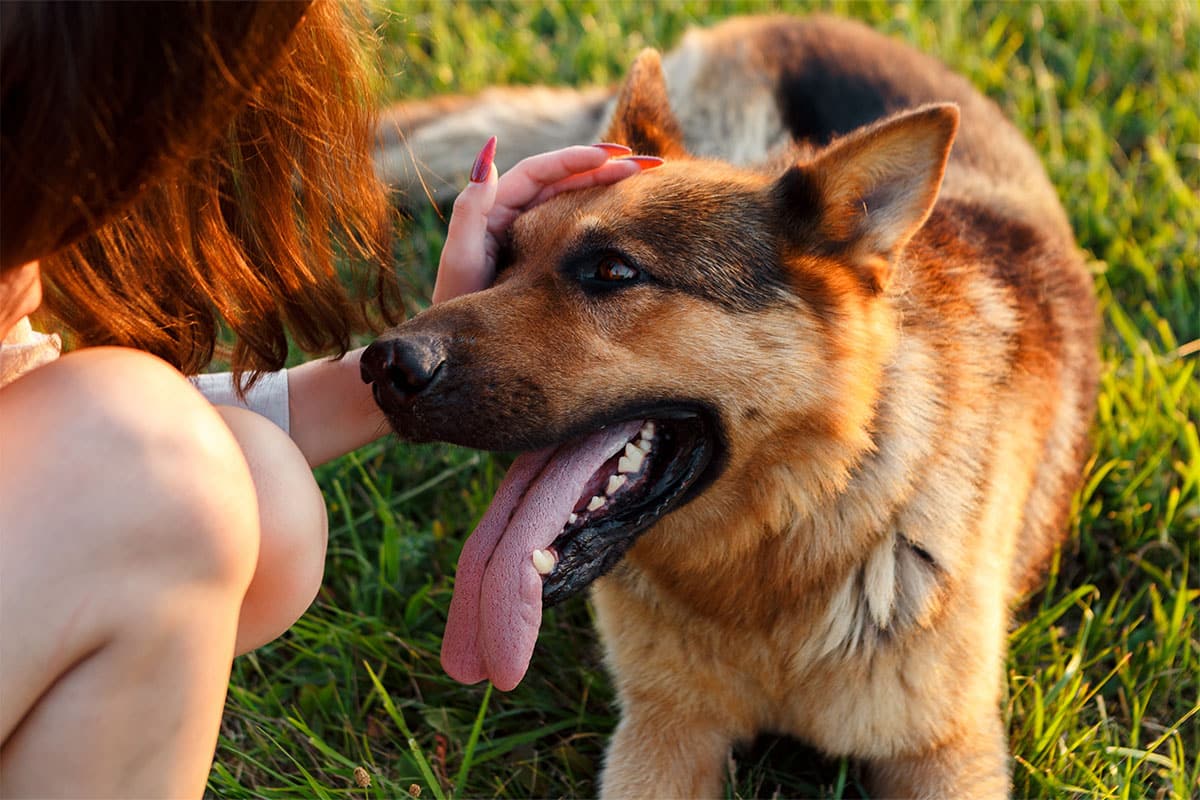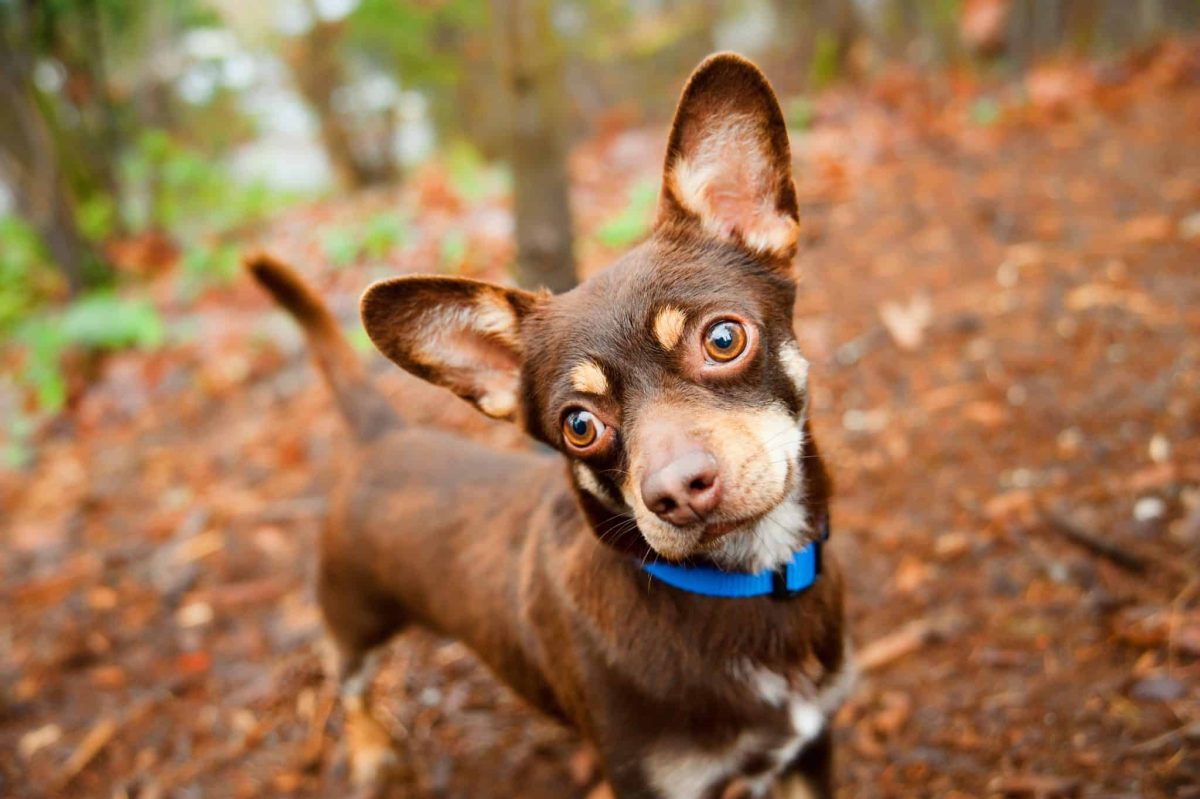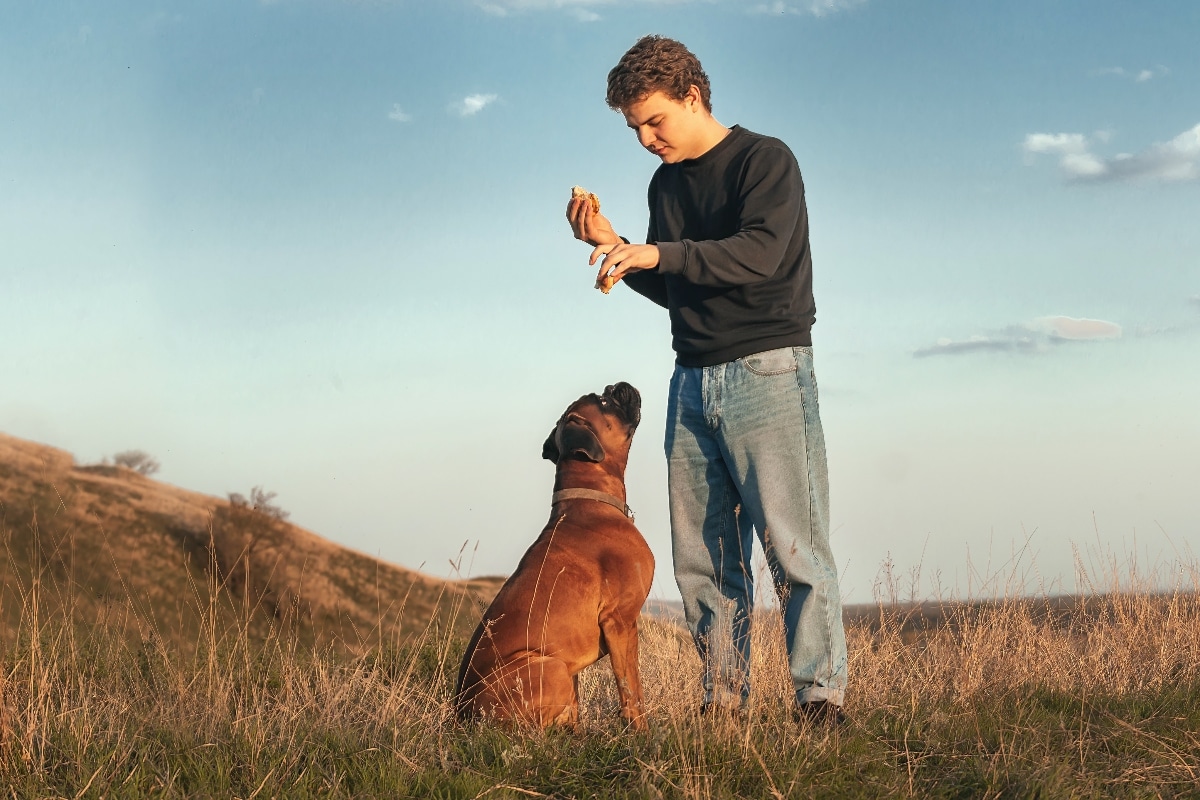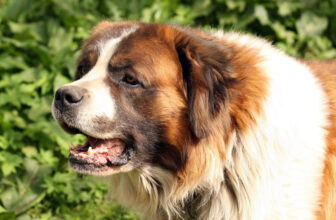
Check out our latest products
Shutterstock
There’s something undeniably charming about the way dogs tilt their heads. That curious little cock to one side has melted countless hearts and sparked just as many questions. Is it a signal of confusion, a search for meaning, or something even deeper? While the gesture is often seen as cute, it’s packed with insight into how dogs process the world around them.
Trying to Hear You Better

Shutterstock
Dogs often tilt their heads to reposition their ears and pinpoint the direction of a sound. Their ear structure allows for some directional hearing, but a tilt can enhance their auditory focus. It’s especially common when they hear high-pitched sounds or unfamiliar noises. The gesture helps them gather more information before reacting.
Reading Human Facial Expressions

Shutterstock
Tilting their heads can help dogs see our faces more clearly, especially if they have long snouts. By shifting their view, they may get a better line of sight to our eyes and mouth—two important communication zones. This adjustment helps them interpret our emotions and intentions more accurately. Dogs are remarkably attuned to human expressions, and the tilt aids this understanding.
Showing Empathy or Concern

Shutterstock
When your dog tilts its head as you speak in a sad or anxious tone, it might be responding to your emotional cues. Dogs are known for their sensitivity to human emotions and may mirror your mood through posture and expression. The tilt can be a subtle way of showing concern or trying to comfort you. It’s their way of saying, “I’m listening, and I care.”
Processing New Words

Shutterstock
Dogs can learn dozens—sometimes hundreds—of words, and a tilt may mean they’re trying to interpret one they’ve just heard. Hearing an unfamiliar word might cause them to pause and think, especially if it’s spoken with an excited tone. This head movement could reflect an effort to connect the sound with a familiar action or object. It’s a cognitive moment captured in a simple gesture.
Reacting to Interesting or Unusual Sounds

Shutterstock
Whether it’s a squeaky toy or the jingle of keys, an intriguing noise often sparks a curious head tilt. Dogs may be analyzing the sound’s source or intent, wondering if it means food, play, or a stranger. This instinctive reaction shows their awareness and alertness. It’s a sign they’re mentally engaged with their environment.
Seeking a Better View

Shutterstock
For some breeds, a head tilt provides a visual advantage, especially when their field of vision is partially blocked by a long snout or heavy brows. Tilting the head can help them see around obstacles and focus on the subject of interest. This simple adjustment gives them a clearer look at you or an object they’re curious about. In essence, they’re trying to get a better perspective—literally.
Encouraged by Human Reactions

Shutterstock
Dogs are quick to learn which behaviors get positive responses from their humans. If a head tilt consistently leads to laughter, praise, or treats, your dog may repeat it for attention. Over time, this cute gesture can become a learned behavior rather than a purely instinctual one. It’s yet another example of how dogs read us like a book.
Expressing Confusion or Uncertainty

Shutterstock
A head tilt might signal that a dog doesn’t fully understand what’s being asked or what’s happening. It’s their way of pausing to think or ask for clarification without words. This behavior is often paired with alert ears and focused eyes. It shows that they’re trying to figure things out, just like we do.
Reacting to Training Cues

Shutterstock
During training, dogs may tilt their heads when processing commands or anticipating what comes next. It’s a visual cue that they’re engaged and thinking through your request. Some dogs even use the tilt to visually check their trainer’s facial expressions for additional hints. It’s a thoughtful pause in action.
Trying to Identify Familiar Words

Shutterstock
Dogs sometimes tilt their heads when they think they’ve heard a familiar term like “walk,” “treat,” or “outside.” They’re matching the sound to their mental vocabulary and trying to confirm its meaning. The tilt may reflect an excited anticipation or hopeful curiosity. It’s a small motion filled with big expectations.
Dealing with Vision or Balance Issues

Shutterstock
Though rare, some head tilts are due to medical conditions like ear infections, vestibular disease, or vision problems. These tilts are often persistent and may be accompanied by stumbling or other symptoms. If a head tilt seems constant or off-balance, it’s worth checking with a vet. Not all tilts are playful or innocent.
Part of Their Unique Personality

Shutterstock
Some dogs are natural head-tilters, doing it more often than others purely due to temperament. Just like humans have different mannerisms, dogs develop their own communication quirks. A frequent head-tilter might simply be more expressive or socially tuned in. It’s part of what makes each dog so special.
Mimicking Human Behavior

Shutterstock
Dogs are masters at observing and mimicking their owners. If you tend to tilt your head while speaking or listening, your dog might do the same. It’s a form of social mirroring—an unconscious way of connecting with their favorite humans. This shared gesture builds a subtle but powerful bond.
That Tilt Says It All!

Shutterstock
Whether they’re decoding your words, angling for a better look, or just soaking up your love, a dog’s head tilt is never meaningless. It’s a window into their complex inner world—a blend of instinct, intelligence, and emotion. Each tilt tells a tiny story about what they’re thinking or feeling. And if nothing else, it’s one more reason to love them even more.







![[5G & 2.4G] 2K Indoor Security Camera for Home Security, AI Voice Change for 2-Way Talk, Motion Detection, Night Vision, 24/7 SD Recording/Cloud Storage, WiFi Home Camera, Pet Cam with Phone App](https://i3.wp.com/m.media-amazon.com/images/I/61I2U+sTT3L._AC_SL1500_.jpg?w=300&resize=300,300&ssl=1)






